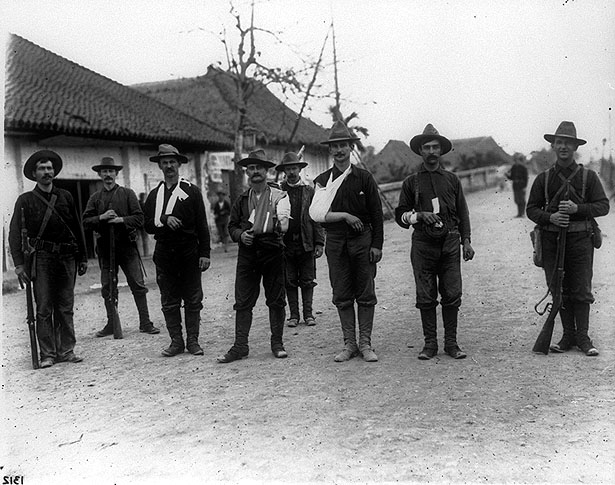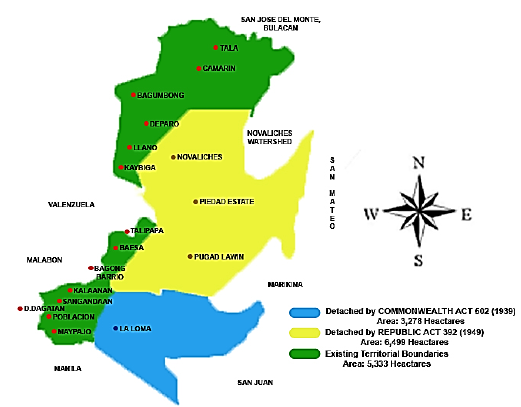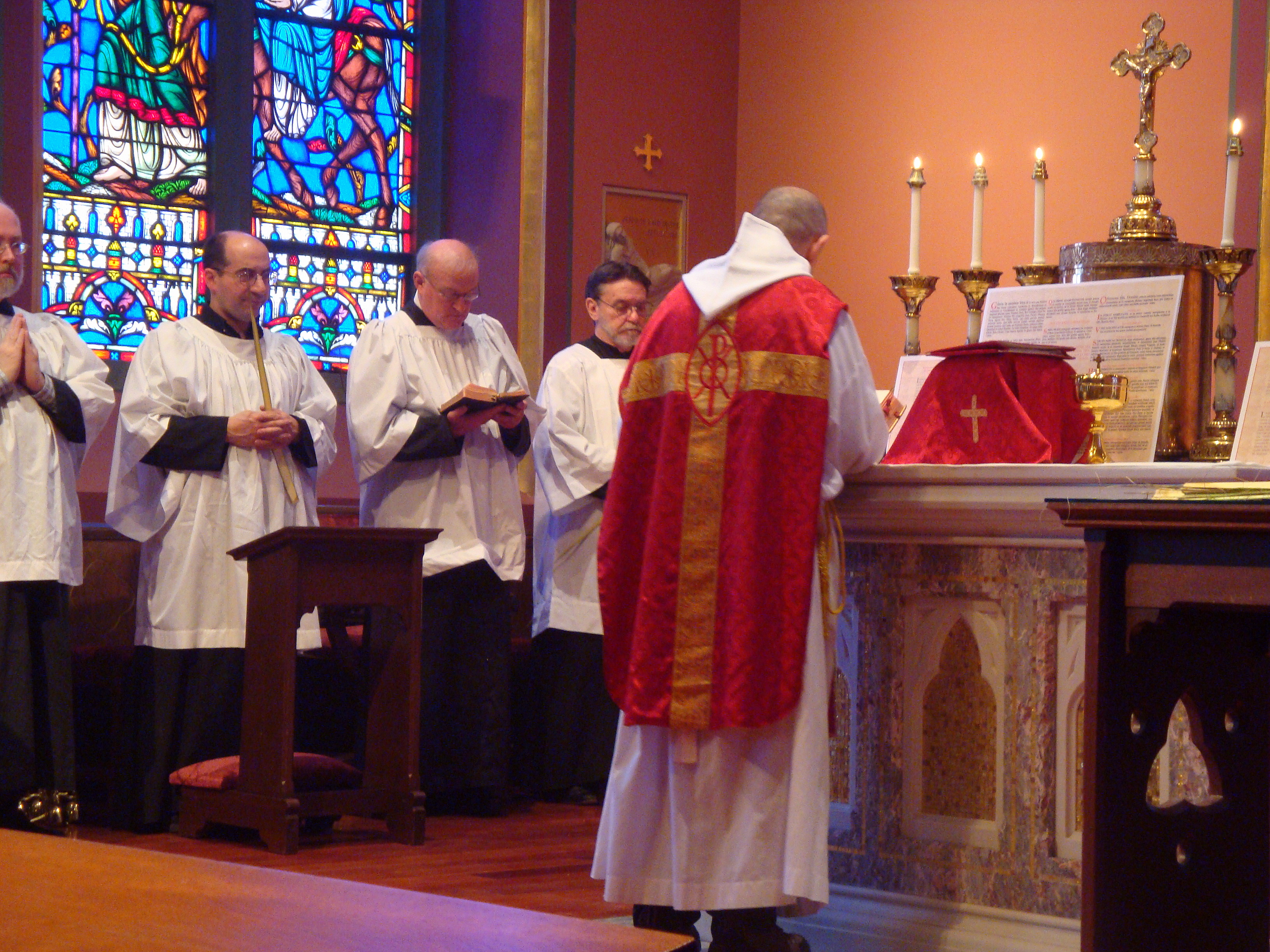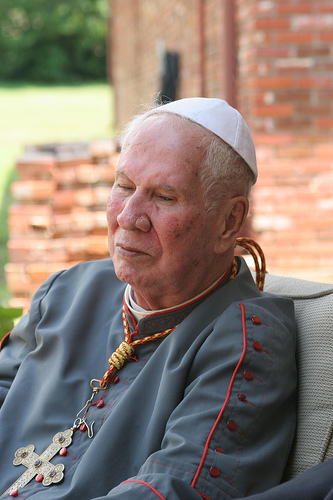|
Rogelio Del Rosario Martinez
Rogelio del Rosario Martinez Jr., who took the name Pope Michael II, is a Filipino conclavist bishop claimant to the papacy. He was elected by lot at a conclave held in Vienna, Austria, in July 2023. Born in Manila, Philippines, Martinez graduated from a Roman Catholic seminary in 1997 but did not seek holy orders. After teaching law at university level, Martinez came into contact with the independent catholic movement in 2002 and was ordained as a priest in 2003. Elevated to bishop in 2010, Martinez made a profession of faith to David Bawden, known as Pope Michael I, in 2019. David Bawden was an American conclavist who believed that the Roman Catholic hierarchy had apostatized from the Catholic faith since Vatican II, and that there had been no legitimate popes elected since the death of Pope Pius XII in 1958. Bawden organised a conclave at which he was elected Pope in 1990. Pope Michael I died in August 2022. Martinez was elected as his successor, choosing the papal name Mi ... [...More Info...] [...Related Items...] OR: [Wikipedia] [Google] [Baidu] |
Pope Francis
Pope Francis (born Jorge Mario Bergoglio; 17 December 1936 – 21 April 2025) was head of the Catholic Church and sovereign of the Vatican City State from 13 March 2013 until Death and funeral of Pope Francis, his death in 2025. He was the first Jesuit pope, the first Latin American, and the first born or raised outside Europe since the 8th-century Syrian pope Pope Gregory III, Gregory III. Born in Buenos Aires, Argentina, to a family of Italian Argentines, Italian origin, Bergoglio was inspired to join the Jesuits in 1958 after recovering from a severe illness. He was Ordination#Catholic, Orthodox, Lutheran and Anglican churches, ordained a Catholic priest in 1969, and from 1973 to 1979 he was the Jesuit provincial superior in Argentina. He became the archbishop of Buenos Aires in 1998 and was created a Cardinal (Catholic Church), cardinal in 2001 by Pope John Paul II. Following resignation of Pope Benedict XVI, the resignation of Pope Benedict XVI, the 2013 pa ... [...More Info...] [...Related Items...] OR: [Wikipedia] [Google] [Baidu] |
Catholic Church In The Philippines
As part of the worldwide Catholic Church, the Catholic Church in the Philippines (), or the Philippine Catholic Church or Philippine Roman Catholic Church, is part of the world's largest Christian church under the spiritual leadership of the Pope in Rome. The Philippines is one of the two nations in Asia having a substantial portion of the population professing the Catholic faith, along with East Timor, and has the third largest Catholic population in the world after Brazil and Mexico. The episcopal conference responsible in governing the faith is the Catholic Bishops' Conference of the Philippines (CBCP). Christianity, through Catholicism, was first brought to the Philippine islands by Spanish soldiers, missionaries and settlers, who arrived in waves beginning in the early 16th century in Cebu by way of colonization. Catholicism served as the country's state religion during the Spanish colonial period; since the American colonial period, the faith today is practiced in t ... [...More Info...] [...Related Items...] OR: [Wikipedia] [Google] [Baidu] |
Santa Mesa
Santa Mesa is a district in Manila, Philippines. It is surrounded by the Pasig River on the southwestern side, and by the San Juan River on its southern and eastern side. Land borders include the districts of San Miguel to the west and Sampaloc to the north; and to the northeast is Quezon City. Santa Mesa was formerly a part of the Sampaloc district, from which it was partitioned and separated after it had its own parish in 1903. The parish is now known as Old Sta. Mesa (Poblacion), which extends from Victorino Mapa Street (Calle Santa Mesa) to Magsaysay Boulevard (Santa Mesa Boulevard). Etymology The district's name comes from the Jesuits, who christened the area ''Hermandad de Santa Mesa de la Misericordia'' ( Spanish for "Brotherhood of the Holy Table of Mercy"). The local parish church had for its titular Sacred Heart of Jesus, which formed part of the phrase the "Center of the Table is the Sacred Heart which all Graces and Mercy flowed down." The Tuason family are the ... [...More Info...] [...Related Items...] OR: [Wikipedia] [Google] [Baidu] |
Novaliches
Novaliches is a place that forms the northern areas of Quezon City, and encompasses the whole area of Caloocan, North Caloocan. Etymology The name Novaliches came from the name of the small village of Novaliches in the town of Jérica in Spain. It was awarded to General Manuel Pavía y Lacy, who served as a Governor-General of the Philippines in 1854. The child Isabella II of Spain, Queen Isabella II bestowed on him the title "Marquess of Novaliches" for defending her against her uncle Don (honorific), Don Infante Carlos María Isidro of Spain, Carlos María Isidro Benito de Borbón, who claimed the throne of Spain which resulted in the First Carlist War. History On February 2, 1854, General Manuel Pavía y Lacy was sent to Manila to serve as the Governor-General of the Philippines. His task was to establish a penal colony where prisoners were given lands to develop in exchange for their freedom. The colony was given the name Hacienda Tala, and it eventually grew into a la ... [...More Info...] [...Related Items...] OR: [Wikipedia] [Google] [Baidu] |
Second Vatican Council
The Second Ecumenical Council of the Vatican, commonly known as the or , was the 21st and most recent ecumenical council of the Catholic Church. The council met each autumn from 1962 to 1965 in St. Peter's Basilica in Vatican City for sessions of 8 and 12 weeks. Pope John XXIII convened the council because he felt the Church needed "updating" (in Italian: '' aggiornamento''). He believed that to better connect with people in an increasingly secularized world, some of the Church's practices needed to be improved and presented in a more understandable and relevant way. Support for ''aggiornamento'' won out over resistance to change, and as a result 16 magisterial documents were produced by the council, including four "constitutions": * '' Dei verbum'', the ''Dogmatic Constitution on Divine Revelation'' emphasized the study of scripture as "the soul of theology". * '' Gaudium et spes'', the ''Pastoral Constitution on the Church in the Modern World'', concerned the promotion ... [...More Info...] [...Related Items...] OR: [Wikipedia] [Google] [Baidu] |
Sedevacantism
Sedevacantism is a traditionalist Catholic movement which holds that since the 1958 death of Pius XII the occupiers of the Holy See are not valid popes due to their espousal of one or more heresies and that, for lack of a valid pope, the See of Rome is vacant. Sedevacantism owes its origins to the rejection of the theological and disciplinary changes implemented following the Second Vatican Council (1962–1965). The term ''sedevacantism'' is derived from the Latin phrase , which means "the chair f the Bishop of Romebeing vacant". The phrase is commonly used to refer specifically to a vacancy of the Holy See which takes place from the pope's death or election of his successor. The number of sedevacantists is unknown and difficult to measure; estimates range from tens of thousands to hundreds of thousands. Various factions of conclavism">conclavists among sedevacantists have proceeded to end the perceived vacancy in the Holy See by electing their own pope. Etymology The ... [...More Info...] [...Related Items...] OR: [Wikipedia] [Google] [Baidu] |
Traditionalist Catholicism
Traditionalist Catholicism is a movement that emphasizes beliefs, practices, customs, traditions, liturgical forms, devotions and presentations of teaching associated with the Catholic Church before the Second Vatican Council (1962–1965). Traditionalist Catholics particularly emphasize the Tridentine Mass, the Roman Rite liturgy largely replaced in general use by the post-Second Vatican Council Mass of Paul VI. Many Traditionalist Catholics disliked the liturgical changes that followed the Second Vatican Council, and prefer to continue to practice pre-Second Vatican Council traditions and forms. Some also see present teachings on ecumenism as blurring the distinction between Catholics and other Christians. Traditional Catholicism is often more conservative in its philosophy and worldview, promoting a modest style of dressing and teaching a complementarian view of gender roles. A minority of Traditionalist Catholics reject the current papacy of the Catholic Church and follow ... [...More Info...] [...Related Items...] OR: [Wikipedia] [Google] [Baidu] |
Brazilian Catholic Apostolic Church
The Brazilian Catholic Apostolic Church (, ; ICAB) is an Independent Catholicism, Independent Catholic Christian denomination, Christian church established in 1945 by Excommunication in the Catholic Church, excommunicated Catholic Church in Brazil, Brazilian Catholic bishop Carlos Duarte Costa. The Brazilian Catholic Apostolic Church is the largest Independent Catholic church in Brazil, with 560,781 members as of 2010, and 26 dioceses as of 2021; internationally, it has an additional 6 dioceses and 6 provinces. It is governed by a Presiding bishop, president bishop and the Episcopal Council. The church's administration is in Brasília, Brasilia, Brazil. The Brazilian Catholic Apostolic Church is the mother church of an international communion called the Worldwide Communion of Catholic Apostolic Churches, though there is no evidence of any recent activity. History Costa was an outspoken critic of the regime of Brazilian president Getúlio Vargas (1930–1945) and of the Holy See, ... [...More Info...] [...Related Items...] OR: [Wikipedia] [Google] [Baidu] |
Centro Escolar University
Centro Escolar University (; ), commonly referred to as CEU, is a private, non-sectarian, coeducational institution of higher education located in Manila, Philippines. Founded in 1907 by Librada Avelino and Carmen de Luna, CEU is recognized as one of the oldest modern universities in the Philippines. It operates six campuses, including its main campus in San Miguel, Manila, with additional campuses in Malolos, Las Piñas, Cebu City, and two in Makati ( Gil Puyat and Legaspi). CEU offers more than fifty academic programs and is actively involved in research across a range of disciplines. CEU is accredited by the Federation of Accrediting Agencies of the Philippines and the Philippine Association of Colleges and Universities' Commission on Accreditation (Level IV, the highest level), and has full autonomous status from the Commission on Higher Education (CHED). It is certified by the Institute of Corporate Directors, the Department of Trade and Industry, SGS S.A., Arthram ... [...More Info...] [...Related Items...] OR: [Wikipedia] [Google] [Baidu] |
Laity
In religious organizations, the laity () — individually a layperson, layman or laywoman — consists of all Church membership, members who are not part of the clergy, usually including any non-Ordination, ordained members of religious orders, e.g. a nun or a lay brother. In secular usage, by extension, a layperson is a person who is not qualified in a given profession or is not an expert in a particular field. The phrase "layman's terms" is used to refer to plain language that is understandable to the everyday person, as opposed to specialised terminology understood only by a professional. Terms such as ''lay priest'', ''lay clergy'' and ''lay nun'' were once used in certain Buddhist cultures, especially Japanese, to indicate ordained persons who continued to live in the wider community instead of retiring to a monastery. Some Christian churches utilise lay preachers, who sermon, preach but are not clergy. The Church of Jesus Christ of Latter-day Saints uses the term ''lay pri ... [...More Info...] [...Related Items...] OR: [Wikipedia] [Google] [Baidu] |
Roman Catholic Diocese Of Malolos
The Diocese of Malolos (Latin language, Latin: ''Dioecesis Malolosinae''; Tagalog language, Tagalog: ''Diyosesis ng Malolos''; Spanish: ''Diócesis de Malolos'') is a Latin Church ecclesiastical jurisdiction or diocese of the Catholic Church in the Philippines, encompassing the whole Province of Bulacan and City of Valenzuela, Valenzuela City in metropolitan Manila and is a Suffragan bishop, suffragan to the Metropolis (religious jurisdiction), metropolitan Roman Catholic Archdiocese of Manila, Archdiocese of Manila. The mother church of the Diocese is the Malolos Cathedral, Cathedral-Basilica of the Immaculate Conception located in Malolos City, Bulacan. The Blessed Virgin Mary, under the title of Immaculate Conception is the principal patroness of the diocese. It was excised from the Archdiocese of Manila on December 11, 1961, by Pope John XXIII and was officially established on March 11, 1962, upon the installation of Manuel del Rosario, Manuel P. del Rosario, then-Roman Cat ... [...More Info...] [...Related Items...] OR: [Wikipedia] [Google] [Baidu] |
Acolyte
An acolyte is an assistant or follower assisting the celebrant in a religious service or procession. In many Christian denominations, an acolyte is anyone performing ceremonial duties such as lighting altar candles. In others, the term is used for one who has been inducted into a particular liturgical ministry, even when not performing those duties. Etymology The word ''Wikt:acolyte, acolyte'' is derived from the Greek language, Greek word ἀκόλουθος (''akolouthos''), meaning an attendant, via Late Latin ''acolythus''. Eastern Christianity In the Eastern Orthodox Church, Eastern Orthodox and Byzantine Rite Eastern Catholic Churches, the nearest equivalent of acolyte is the altar server. At one time there was a rank of minor clergy called the ''taper-bearer'' (κηροφόρος) responsible for bearing lights during processions and liturgical Entrance (Liturgical), entrances. However, this rank has long ago been subsumed by that of the Reader (liturgy), reader and t ... [...More Info...] [...Related Items...] OR: [Wikipedia] [Google] [Baidu] |








